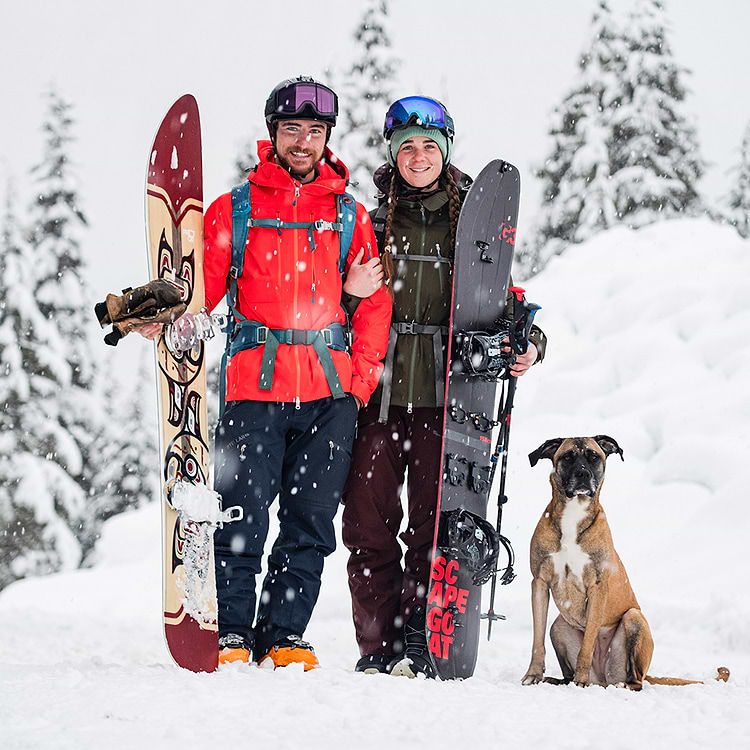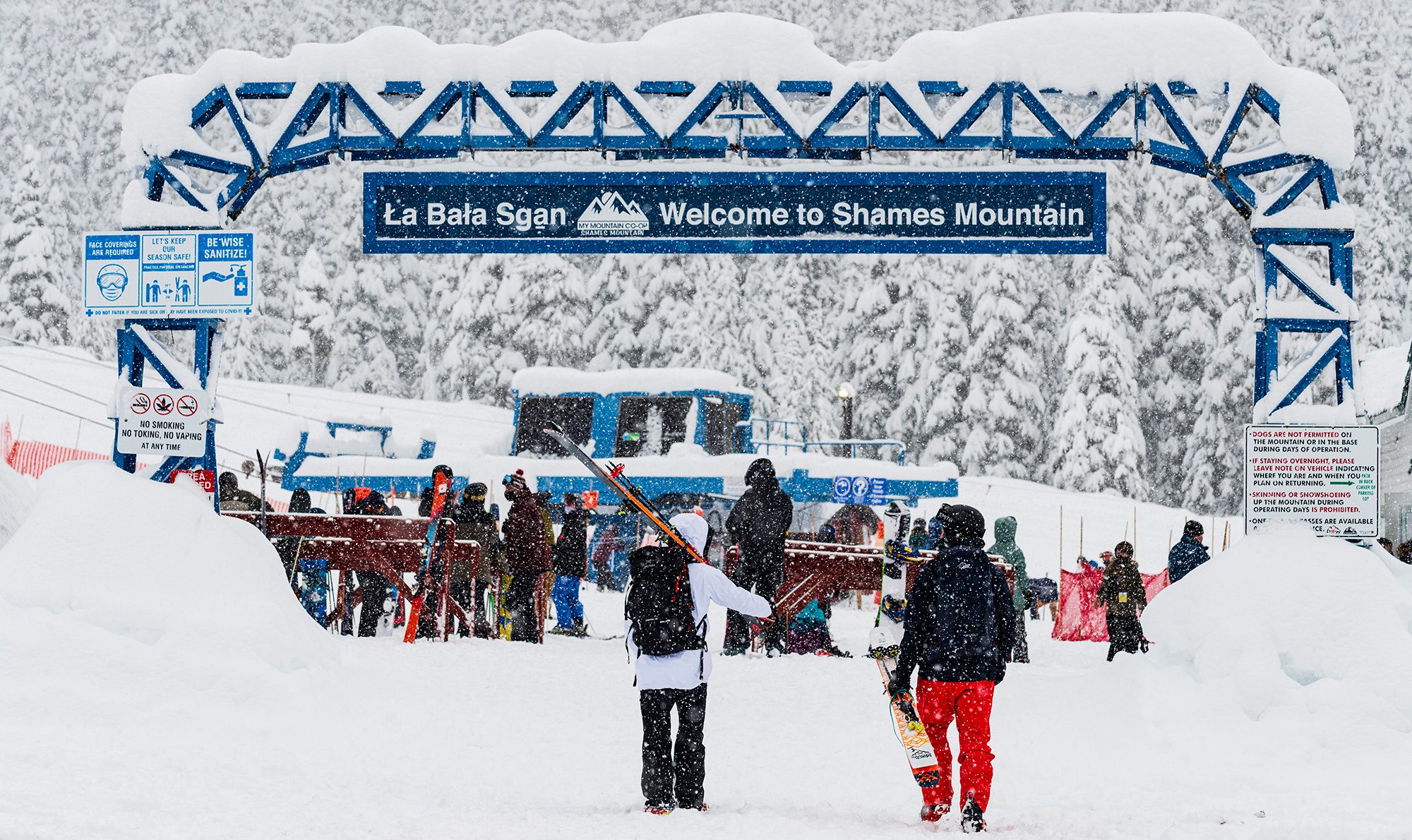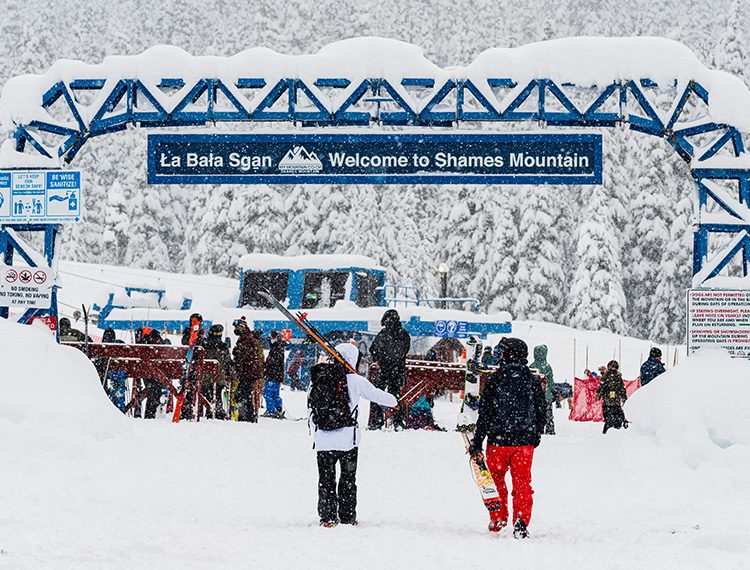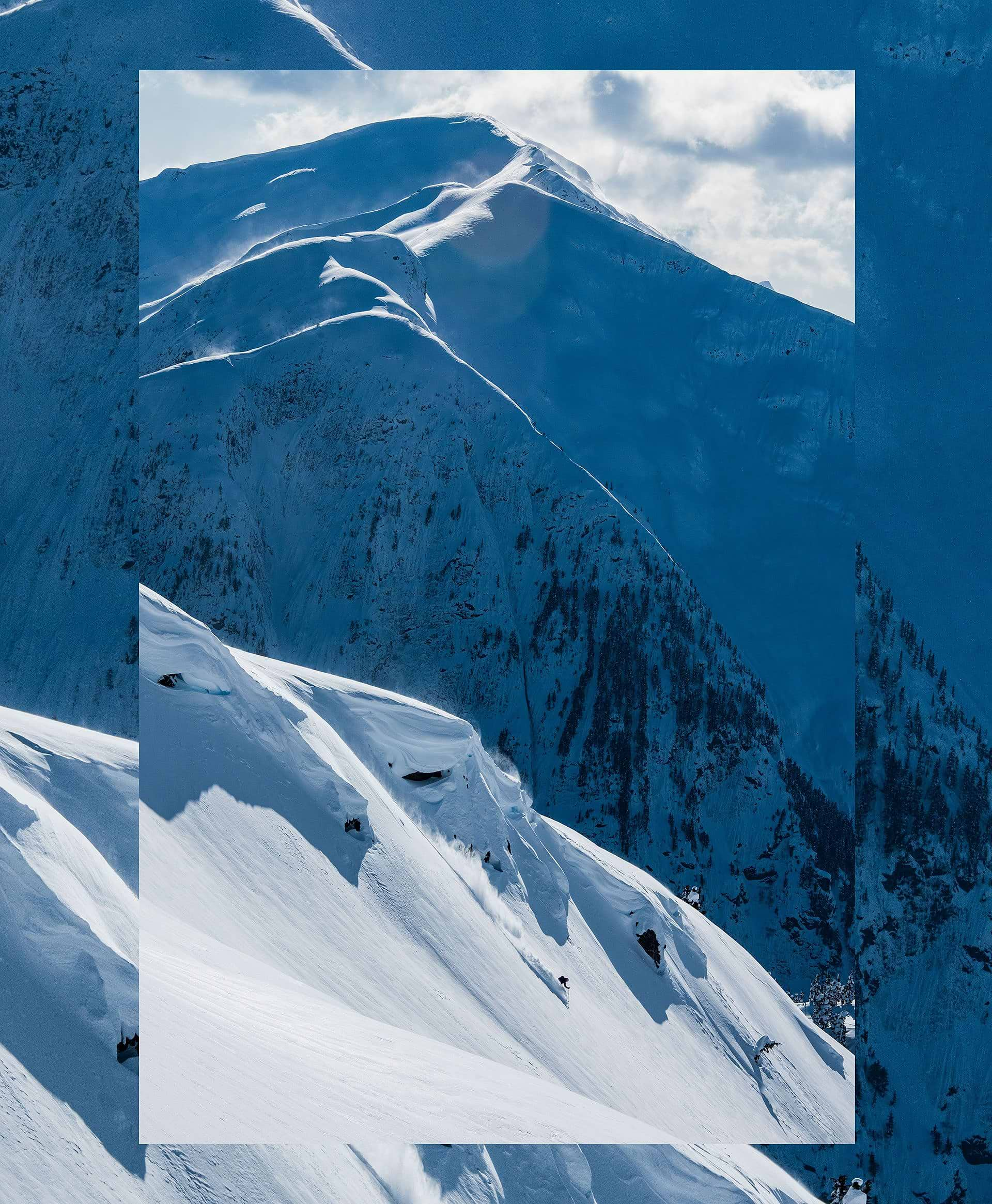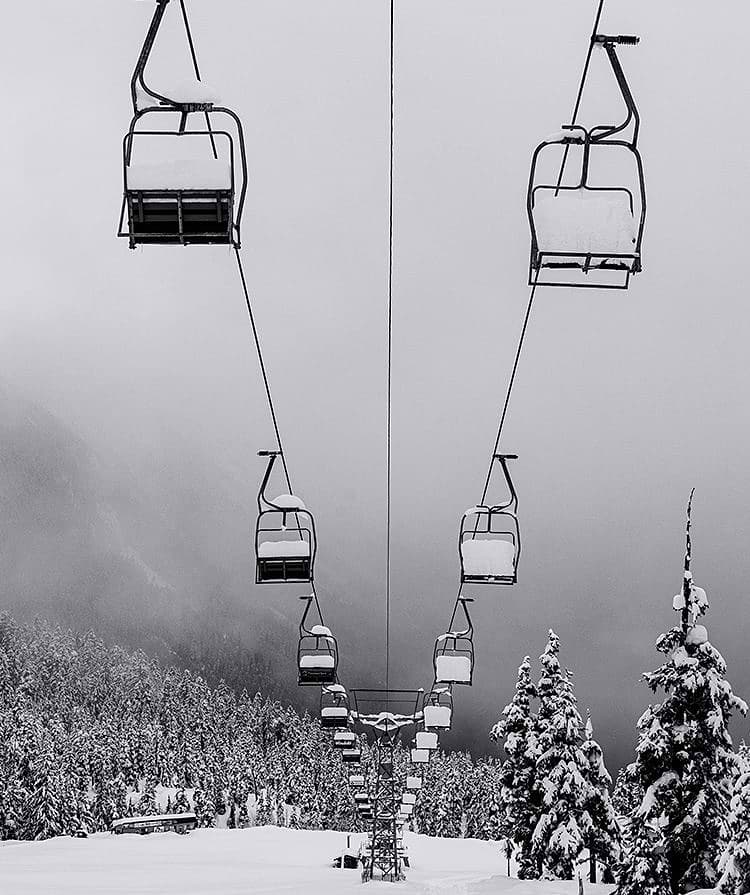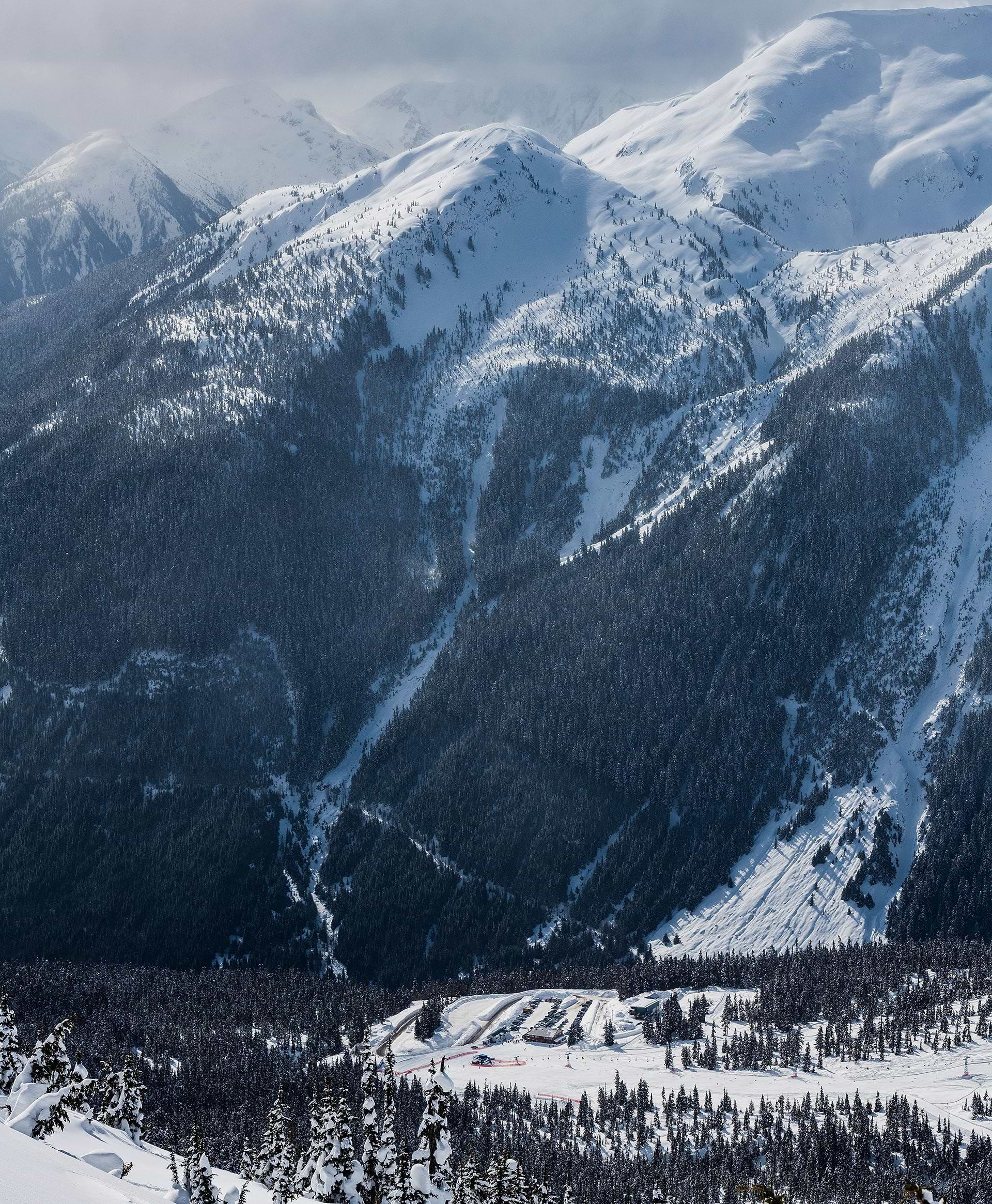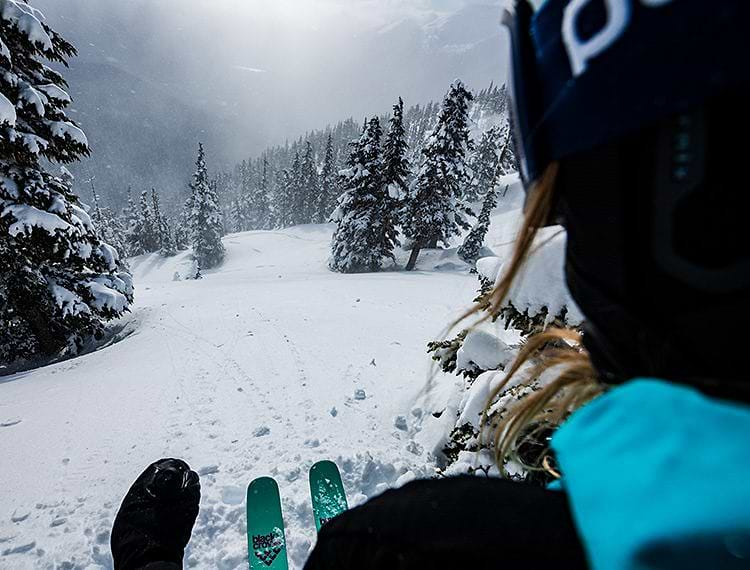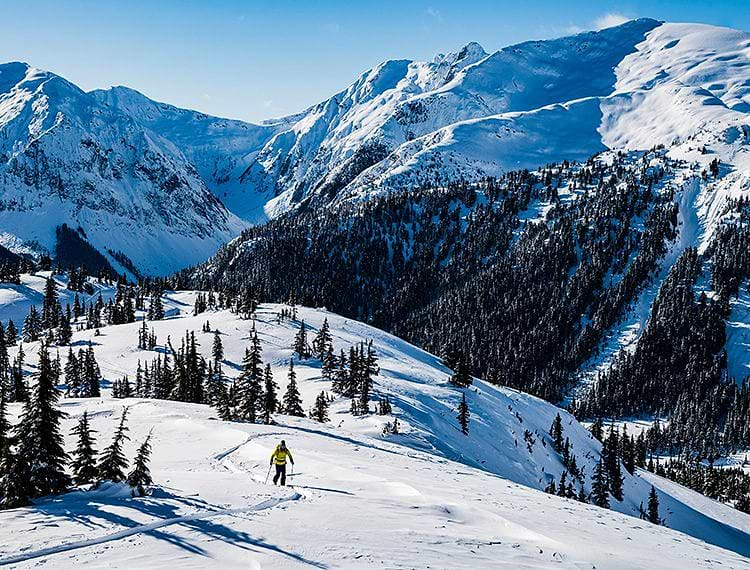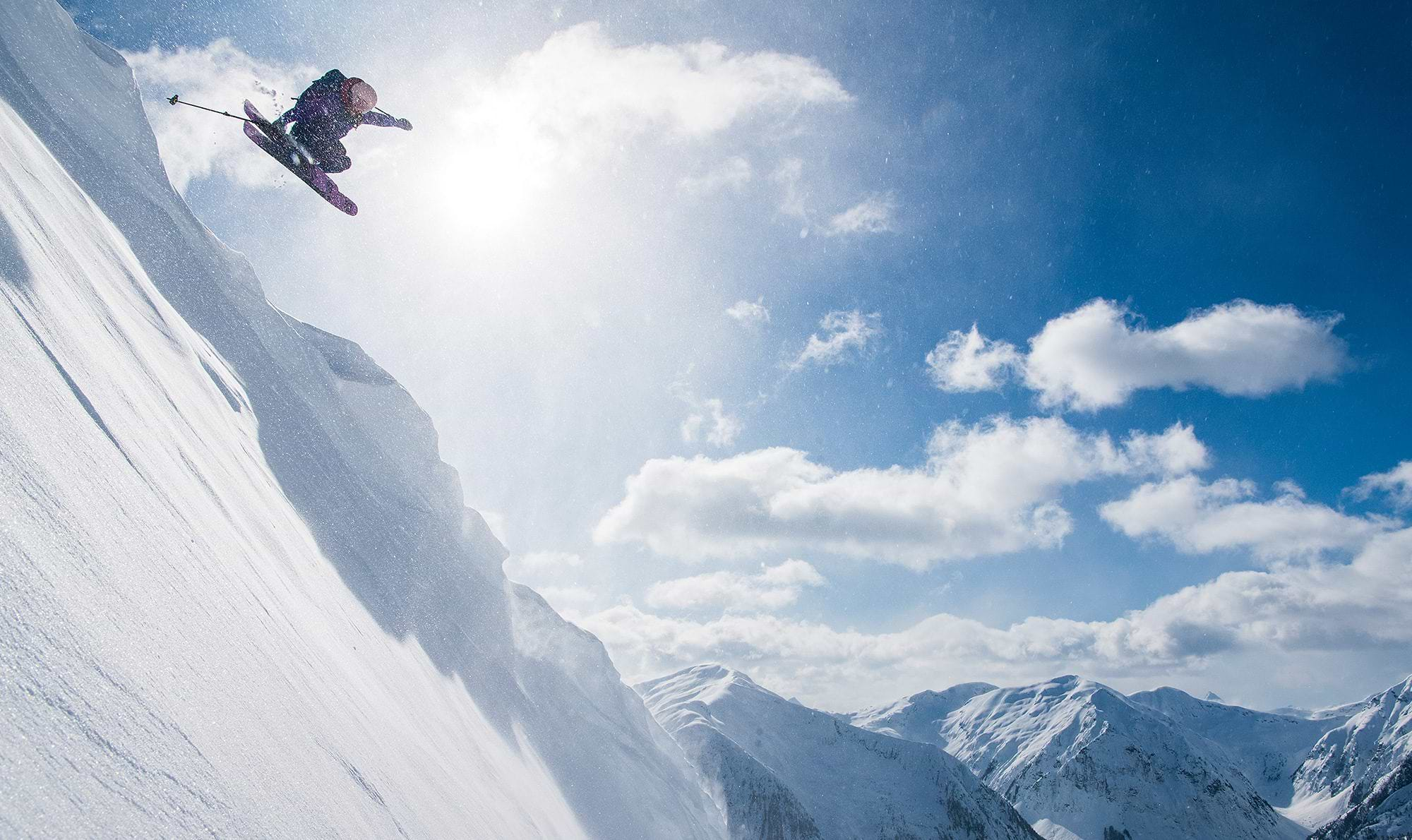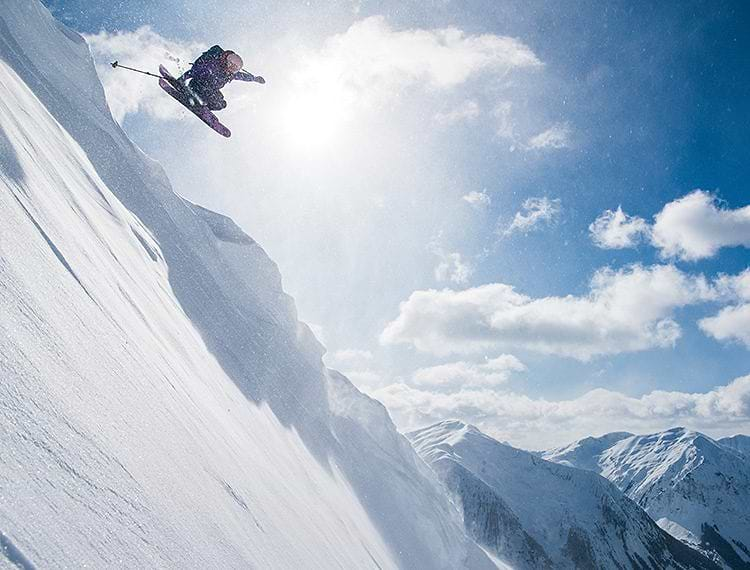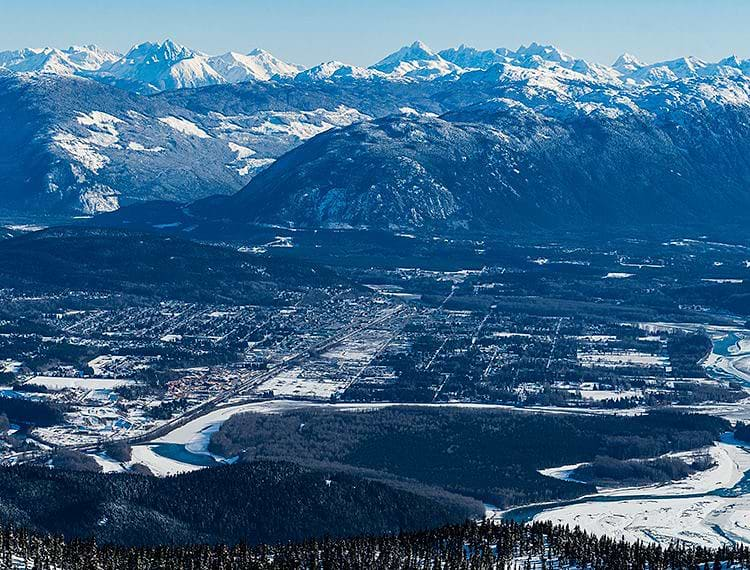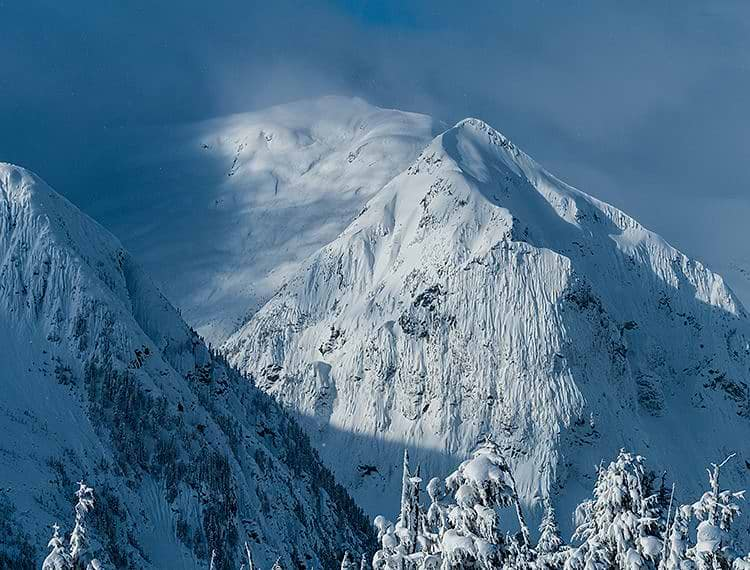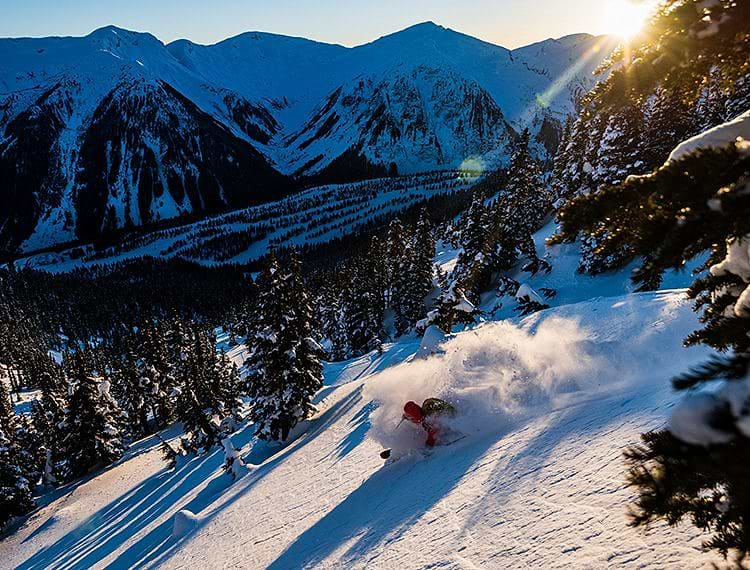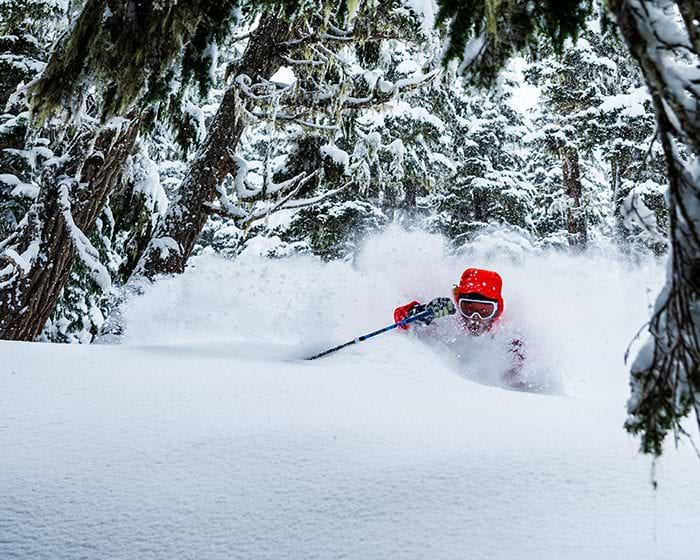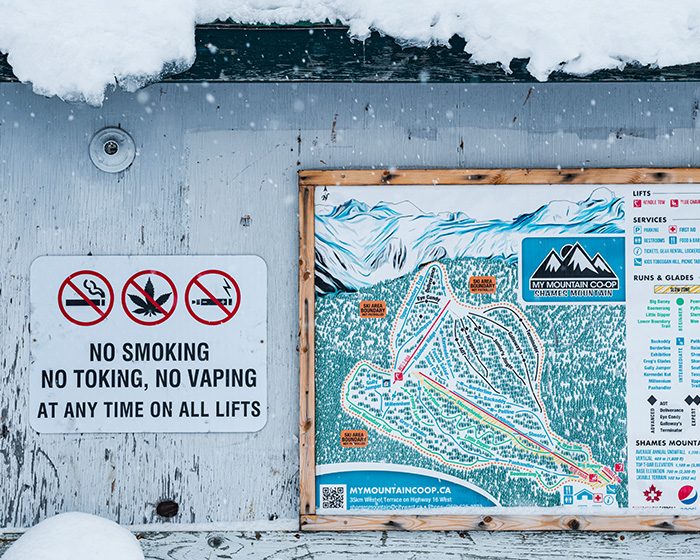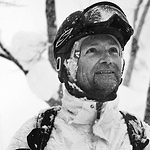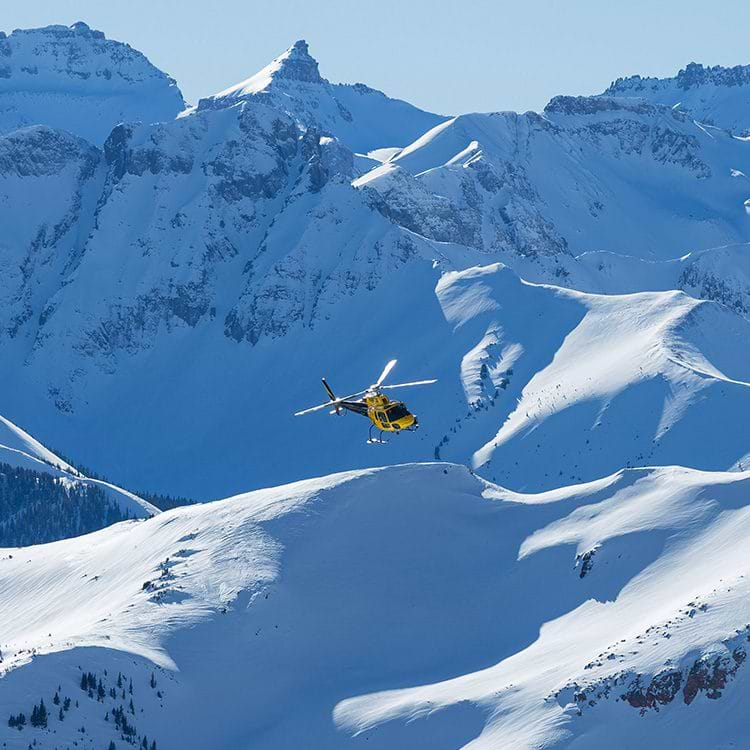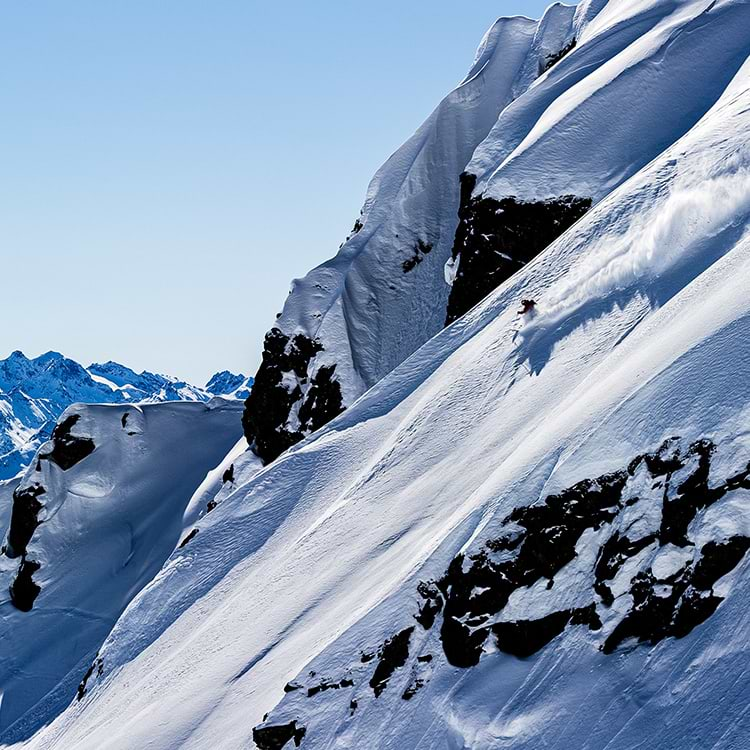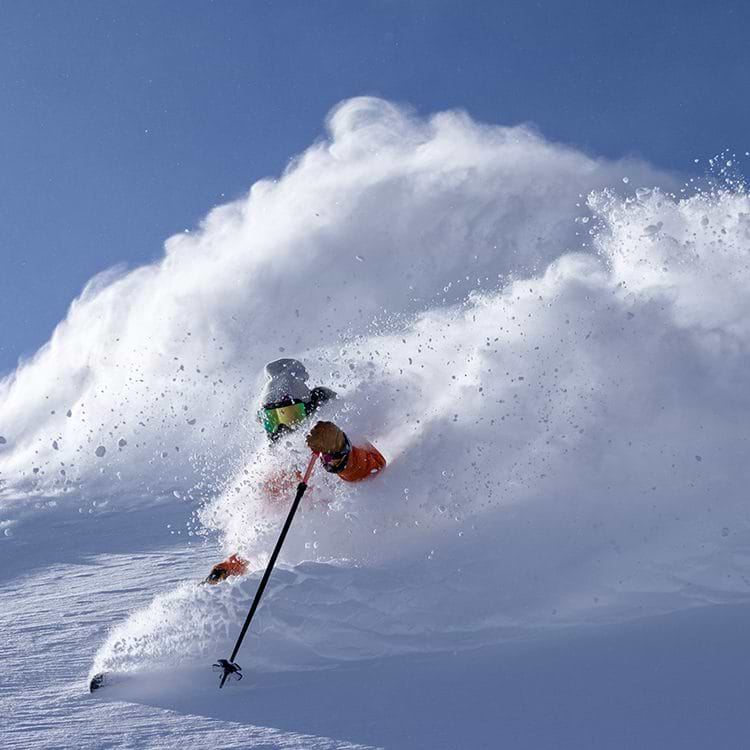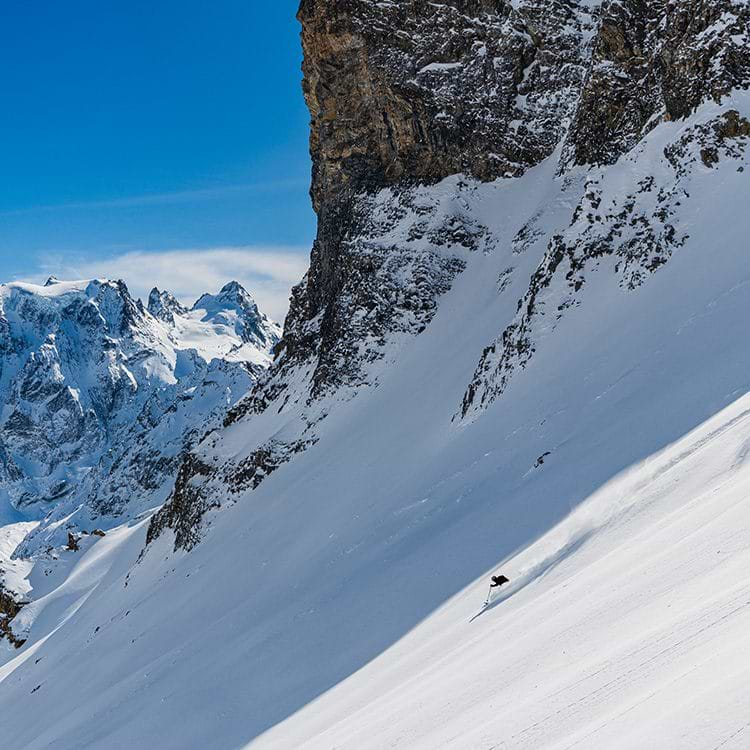On a stormy day at Shames Mountain outside Terrace, British Columbia, you skate off the T-bar into the kind of fat flakes that ski dreams are made of. Go left, and you’ll drop through out-of-bounds glades, part of what’s been called the best slackcountry in North America. Go right, and it’s thigh-deep plunges down one of Shames’ infamous double-blacks — mechanical bulls of stumps and rock that need at least a metre base to be skiable. On a typical snowy day, however, it feels more like swimming with dolphins as you drop in and out of the depths, gulping air at every turn.
After a few runs, you still haven’t competed for lines or face shots with anyone, and, as clouds lift to reveal a Himalayan vista of glacial cirques and mountains limned by deep-cut valleys, superlatives flow from your mouth. Days this deep and uncrowded might be joyously commonplace for those who live here, but they demand to be shouted from the rooftops by visitors.
A rustic, seriously remote, snow-choked ski area averaging 12 metres annually, Shames isn’t owned by some far-off corporation or conglomerate. Instead, it has operated since 2013 as Canada’s only non-profit community ski cooperative. It is a picture of grassroots ski culture painted by legendary characters who could provide a cartoonist with fodder for a lifetime. Here, a tight-knit cadre of skiers reflects the community ethos of affordability, sustainability, collaboration, and innovation. Uniformly clad in seriously worn outerwear, it’s obvious they support community rather than brands — always looking out for each other, exchanging snow pack information, pitching into shovel or push at the parking lot … and gathering in the homey base lodge to wolf plates of poutine and local craft beer together.
If space is the final frontier in skiing, Shames is its own planet.
The co-op is the latest chapter in a long story of keeping skiing alive in the boom-and-bust resource town of Terrace. When the lower elevations of the town’s original ski hill, Kitsumkalum, fell victim to a changing climate, its infrastructure was picked up and moved to Shames Mountain, 35 kilometres west of town, with a more favourable base elevation. Favourable indeed: the new hill’s inaugural opening in December 1990 was delayed after the groomer buried itself in four metres of snow. That season, the area received a whopping 24 metres.
Snow has never been a problem at Shames, but isolation (it’s a 15-hour drive from Vancouver) and low skier numbers have blessed and cursed the hill from day one. Years ago, finances caught up with it, rumours flew that it would be shut down for good, and a local group scrambled to buy the operation and run it as a co-op. Shames still averages only about 350 skiers each four days a week it’s open and seldom exceeds 600, many of them only using lifts to access surrounding plateaus and ridges that deliver well over 30 separate backcountry routes. Moreover, the ski area has embraced the backcountry experience, offering avalanche courses, developing backcountry route maps, offering single-run lift tickets, renting touring gear, and ensuring skiers educate themselves with a beacon check-gate and hazard signage.
Alongside the allure of Shames, Northern Escape Heli Skiing, Skeena Cat Skiing, and Hankin-Evelyn Backcountry Recreation Area are drawing more skiers to the region. To meet demand, change is coming to Shames — but not in the form of restaurants, hotels, or shopping (you’ll still have to pay for WiFi in the lodge — the “Lunch Hour Special” is 250 MB for $2.95 Cdn). The only change coming is more skiing as Shames cuts a series of unique 600-metre slackcountry runs on a frontside wooded ridge.
Another set of dreams for a stormy day. Look for it on Google Maps — way up there near Alaska. And get in on the secret stash — while it’s still a secret.

